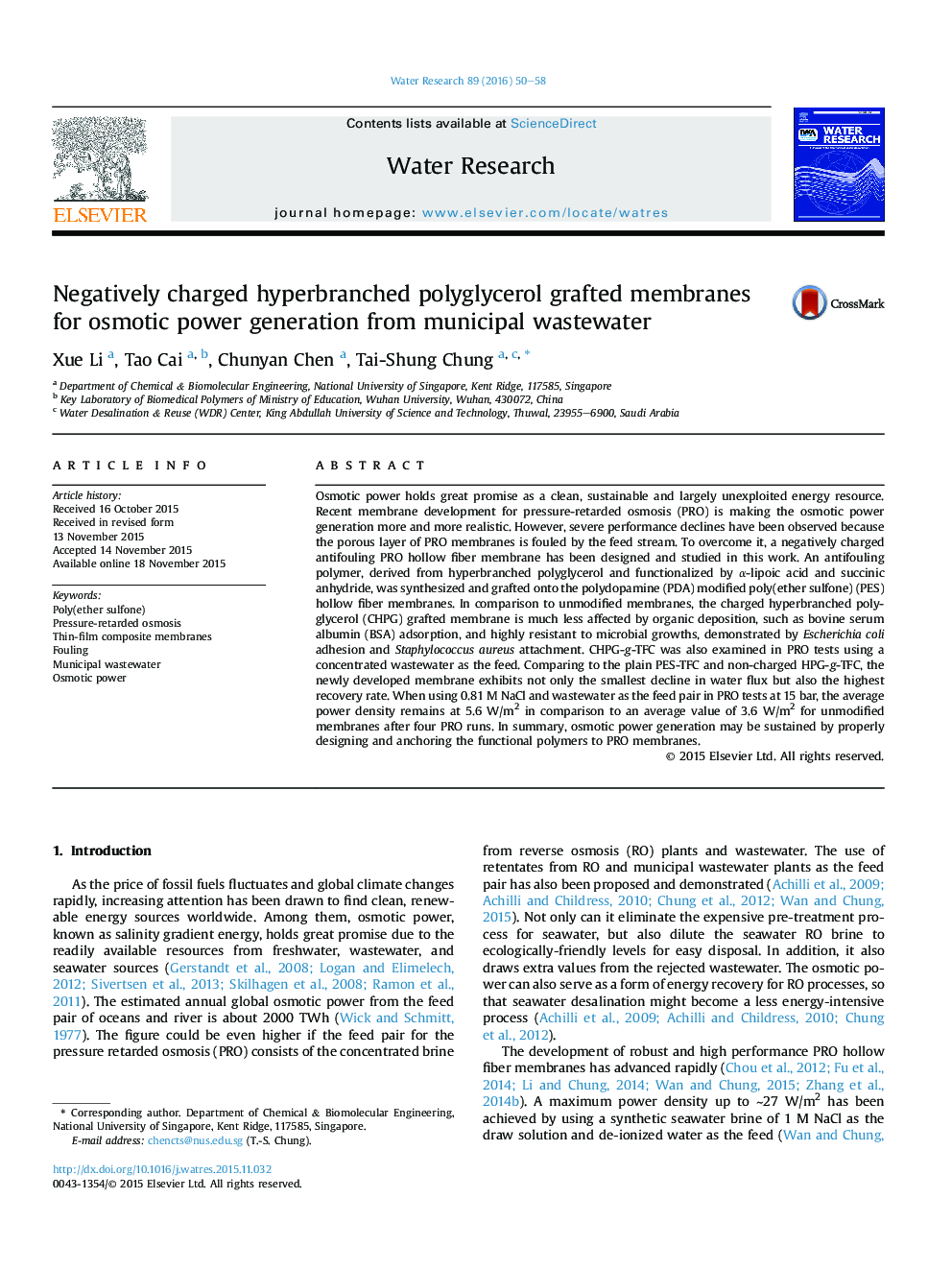| کد مقاله | کد نشریه | سال انتشار | مقاله انگلیسی | نسخه تمام متن |
|---|---|---|---|---|
| 4481021 | 1623079 | 2016 | 9 صفحه PDF | دانلود رایگان |
• A method to fabricate antifouling pressure retarded osmosis (PRO) membranes.
• Real municipal wastewater retentate was employed as the feed.
• The modified membrane has low fouling propensity and high recovery.
• The modified membrane has improved power density.
Osmotic power holds great promise as a clean, sustainable and largely unexploited energy resource. Recent membrane development for pressure-retarded osmosis (PRO) is making the osmotic power generation more and more realistic. However, severe performance declines have been observed because the porous layer of PRO membranes is fouled by the feed stream. To overcome it, a negatively charged antifouling PRO hollow fiber membrane has been designed and studied in this work. An antifouling polymer, derived from hyperbranched polyglycerol and functionalized by α-lipoic acid and succinic anhydride, was synthesized and grafted onto the polydopamine (PDA) modified poly(ether sulfone) (PES) hollow fiber membranes. In comparison to unmodified membranes, the charged hyperbranched polyglycerol (CHPG) grafted membrane is much less affected by organic deposition, such as bovine serum albumin (BSA) adsorption, and highly resistant to microbial growths, demonstrated by Escherichia coli adhesion and Staphylococcus aureus attachment. CHPG-g-TFC was also examined in PRO tests using a concentrated wastewater as the feed. Comparing to the plain PES-TFC and non-charged HPG-g-TFC, the newly developed membrane exhibits not only the smallest decline in water flux but also the highest recovery rate. When using 0.81 M NaCl and wastewater as the feed pair in PRO tests at 15 bar, the average power density remains at 5.6 W/m2 in comparison to an average value of 3.6 W/m2 for unmodified membranes after four PRO runs. In summary, osmotic power generation may be sustained by properly designing and anchoring the functional polymers to PRO membranes.
Figure optionsDownload high-quality image (184 K)Download as PowerPoint slide
Journal: Water Research - Volume 89, 1 February 2016, Pages 50–58
